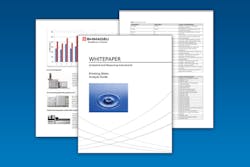Public water systems, regulated by the U.S. Environmental Protection Agency (EPA), provide drinking water to 90 percent of Americans. Water systems and laboratories testing drinking water to ensure Safe Drinking Water Act compliance must be certified and use U.S. EPA approved methods, which are developed by the U.S. EPA, other government agencies, universities, consensus method organizations, water laboratories, and instrument manufacturers. Ensuring a safe water supply requires skilled technicians with an understanding of current and evolving regulations, as well as the latest instrumentation needed to ensure testing standards are being met. This white paper provides an introduction to drinking water sampling, the contaminants tested, sample preservation and instruments used to measure contaminants in drinking water. Fill out the form below to download this white paper.
